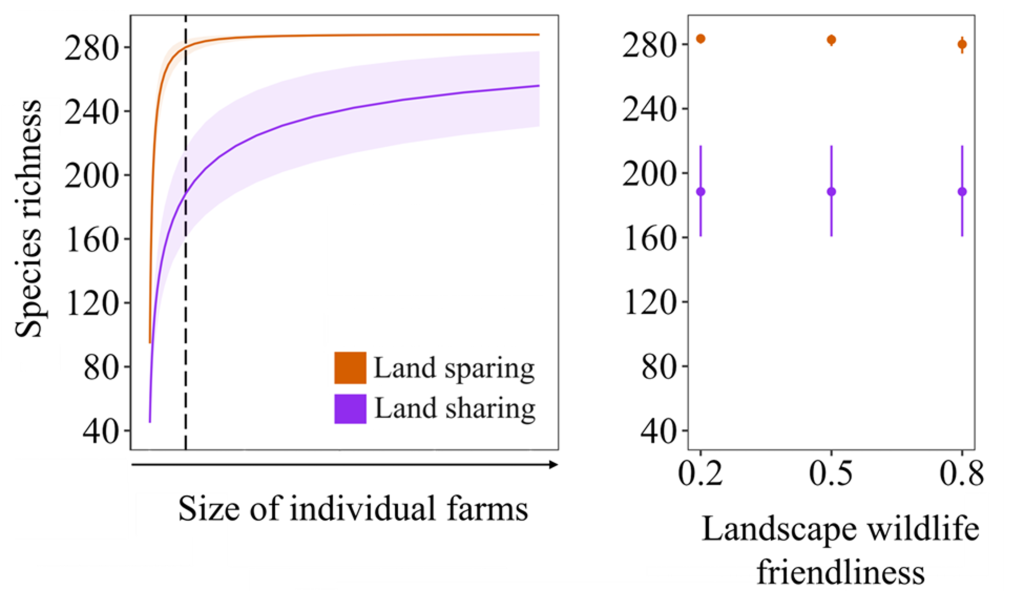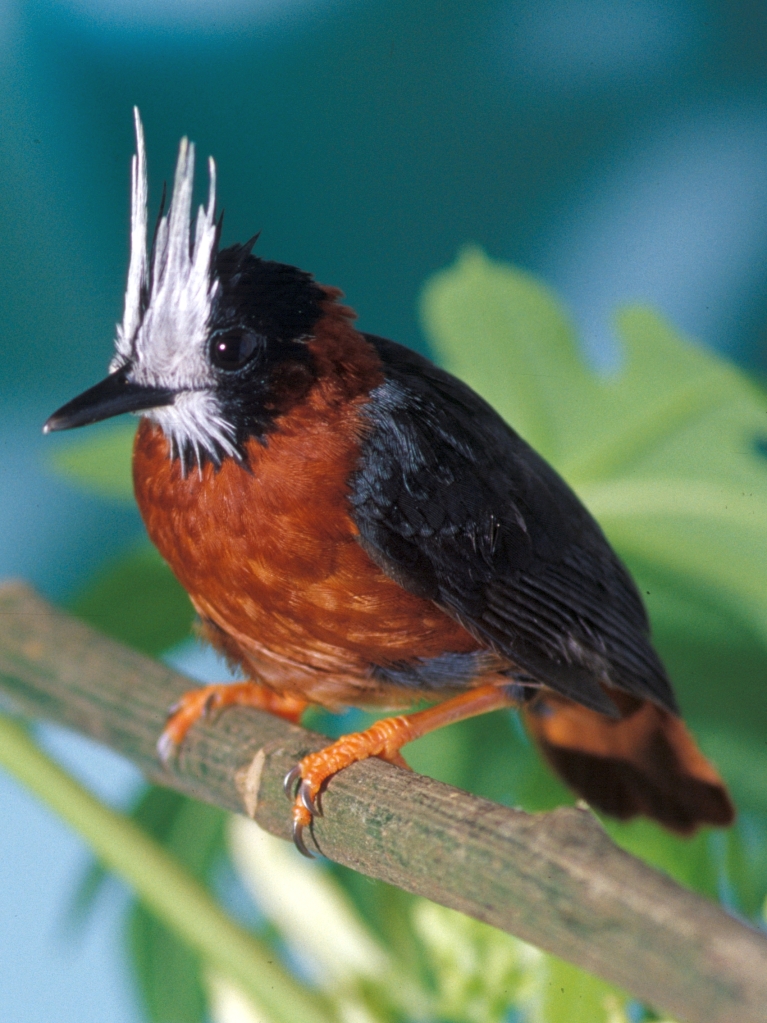Benjamin Birch discusses the role of wildlife-friendly habitat in the wider surrounding landscape in promoting farmland diversity. Alongside colleagues, Birch modelled strategies of land sparing and land sharing under different levels of production.
Background
The conversion of natural habitats to agriculture is one of the greatest threats to biodiversity globally. Currently, 40% of the Earth’s land is dedicated to farming, and projections show a further 70-100% increase in agricultural demand is expected by 2050. Therefore, balancing conservation with farming is critical if we stand any chance of curbing catastrophic biodiversity loss by the turn of the century.
At the heart of the debate surrounding agricultural development and biodiversity protection are two contrasting land allocation strategies: land sharing and land sparing. Land sharing integrates farming and conservation on the same land through less intensive production techniques, maintaining biodiversity but requiring a larger land-use footprint.
In contrast, land sparing separates farming and conservation, intensifying production to reduce the land-use footprint, protecting remaining natural habitats from agricultural conversion.
Across the tropics, land sparing has consistently proved better for biodiversity, showing the importance of preserving natural habitats. However, land sharing has been found to harbour substantial amounts of biodiversity on farmland, particularly when the shared landscape is near large areas of natural habitat.
Consequently, most studies to date have focused on the linear distance between farmland and natural habitats such as primary forest, overlooking the influence of the intermediate habitat matrix on farmland diversity, a question we strove to answer with our study.
Sampling and results
We sampled bird communities across low-intensity cattle pastures and contiguous forest in the Colombian Amazon, which is one of the world’s most biodiverse ecosystems and part of the western Amazon spanning some 1.5 million km2. We chose birds as they are a widely acknowledged indicator species, and then used this data to examine how the proportion of wildlife friendly habitat in a 1km2 radius around farms influenced biodiversity under various sparing and sharing scenarios.
Our results found that land sparing consistently outperformed land sharing for Amazonian bird communities, regardless of individual farm size and the surrounding landscape context. These findings demonstrate that many tropical forest birds are highly dependent on intact forest and unable to traverse or utilise pasture, even when high levels of wildlife friendly habitat are found in the surrounding landscape.

Furthermore, our results potentially point towards environmental filtering (mechanism where the environment selects and influences the types of organisms that can persist in a specific area) being a more important factor than dispersal limitations in determining species occupancy and underscore the importance of protecting large blocks of contiguous forest for many forest species.
In contrast, species less reliant on forest fared better in land sharing scenarios, making up a greater proportion of the farmland bird community. However, these gains of less forest dependent species were not great enough to make up for the loss in forest specialists.

This is an important point as many studies in favour of land sharing report similar levels of species richness to land sparing, however this is often underpinned by a loss in forest specialists being offset by a gain in more generalist, less forest dependent species. Our study therefore highlights the importance of accounting for changes in species composition, given that many forest specialists are of high conservation importance.

Management implications
Small holder farming is the most widespread form of agriculture globally, providing income and food security to many of the world’s most vulnerable populations. However, large farms typically associated with intensive agriculture tend to be owned by the state or large commercial companies. Therefore, it is essential to account for the implications of land sparing on food resilience, sociocultural values, and economic returns.
Land sparing does not need to be dependent on industrial intensification and can instead be achieved through sustainable intensification practices. Silvopasture systems (the practice of integrating trees, forage, and the grazing of domesticated animals in a mutually beneficial way) potentially offer a viable low-cost alternative by benefiting yields while reducing the agricultural land footprint. Importantly, silvopasture habitat would differ from the wildlife friendly habitat we examined on farms which typically consisted of scrub-like patches and isolated trees often inaccessible to cattle due to barbed wire fences.
Furthermore, silvopasture systems provide greater ecosystem services, such as improved water and soil quality, as well as increased carbon sequestration, relative to more intensive systems. Such practices would align with policies advocating sustainable intensification, thereby minimising negative ecological impacts to natural environments, and discouraging further agricultural expansion, while providing the space for the preservation of forest tracts vital for conservation of high forest-dependency species.
Read the full article “Land sparing outperforms land sharing for Amazonian bird communities regardless of surrounding landscape context” in Journal of Applied Ecology.


